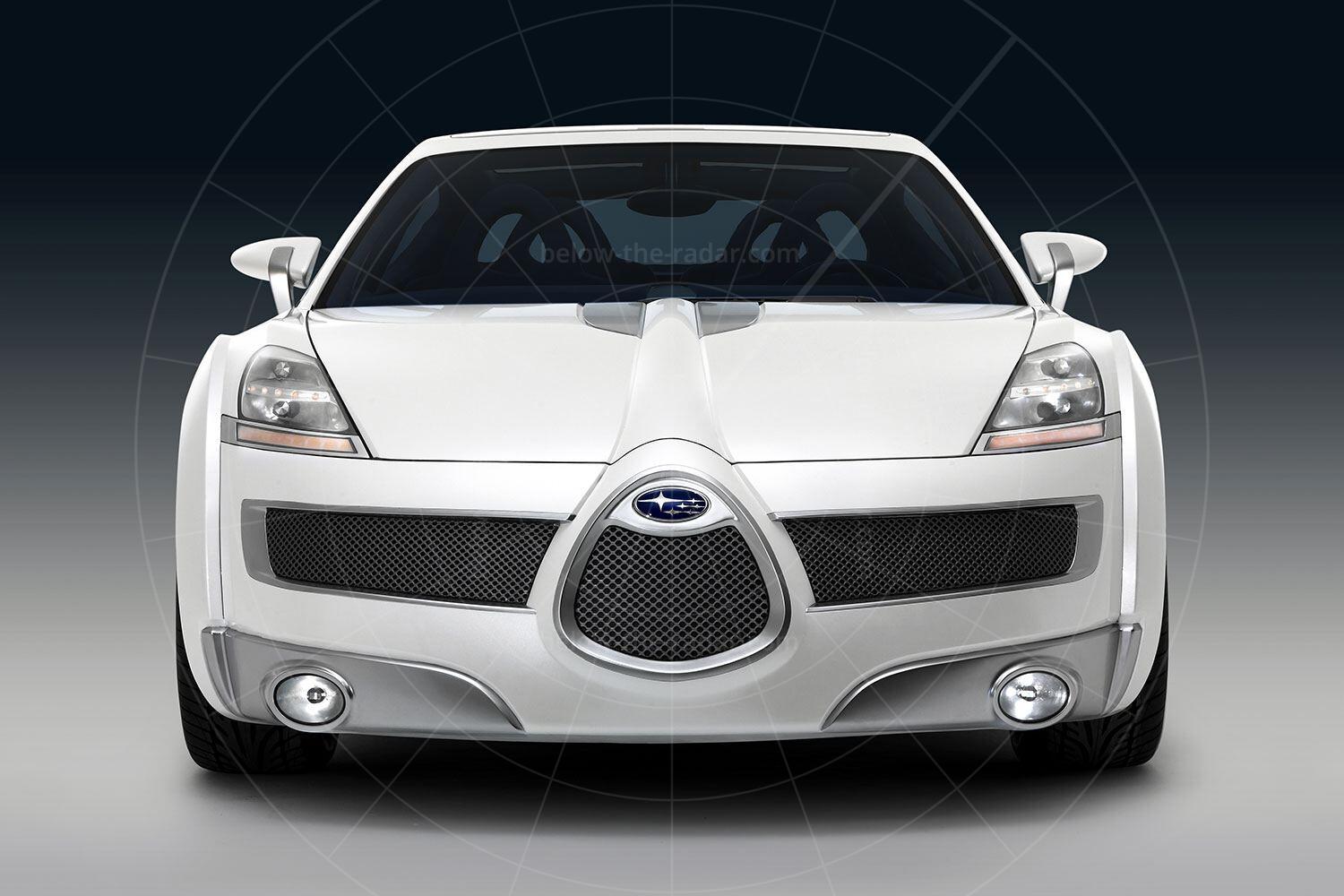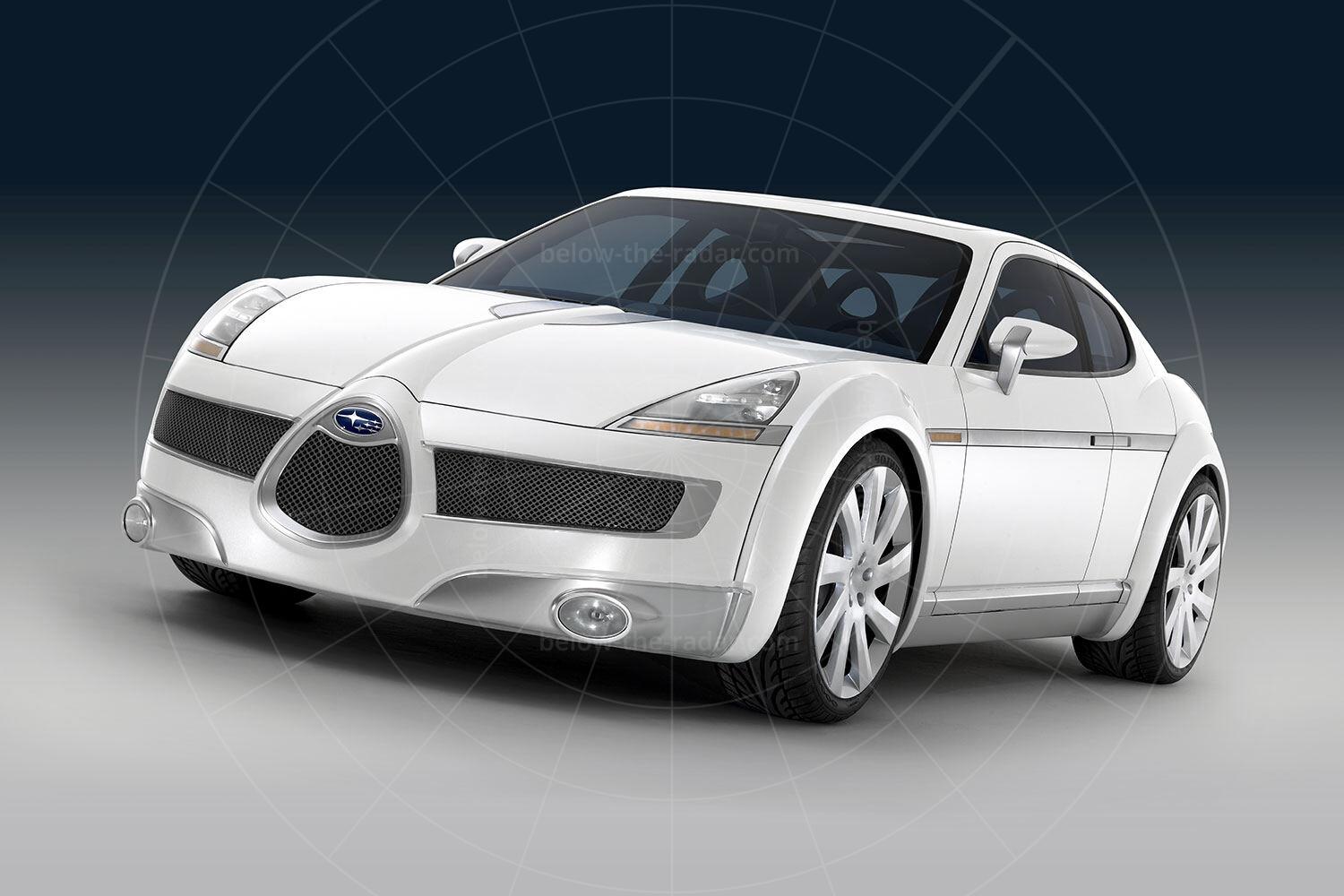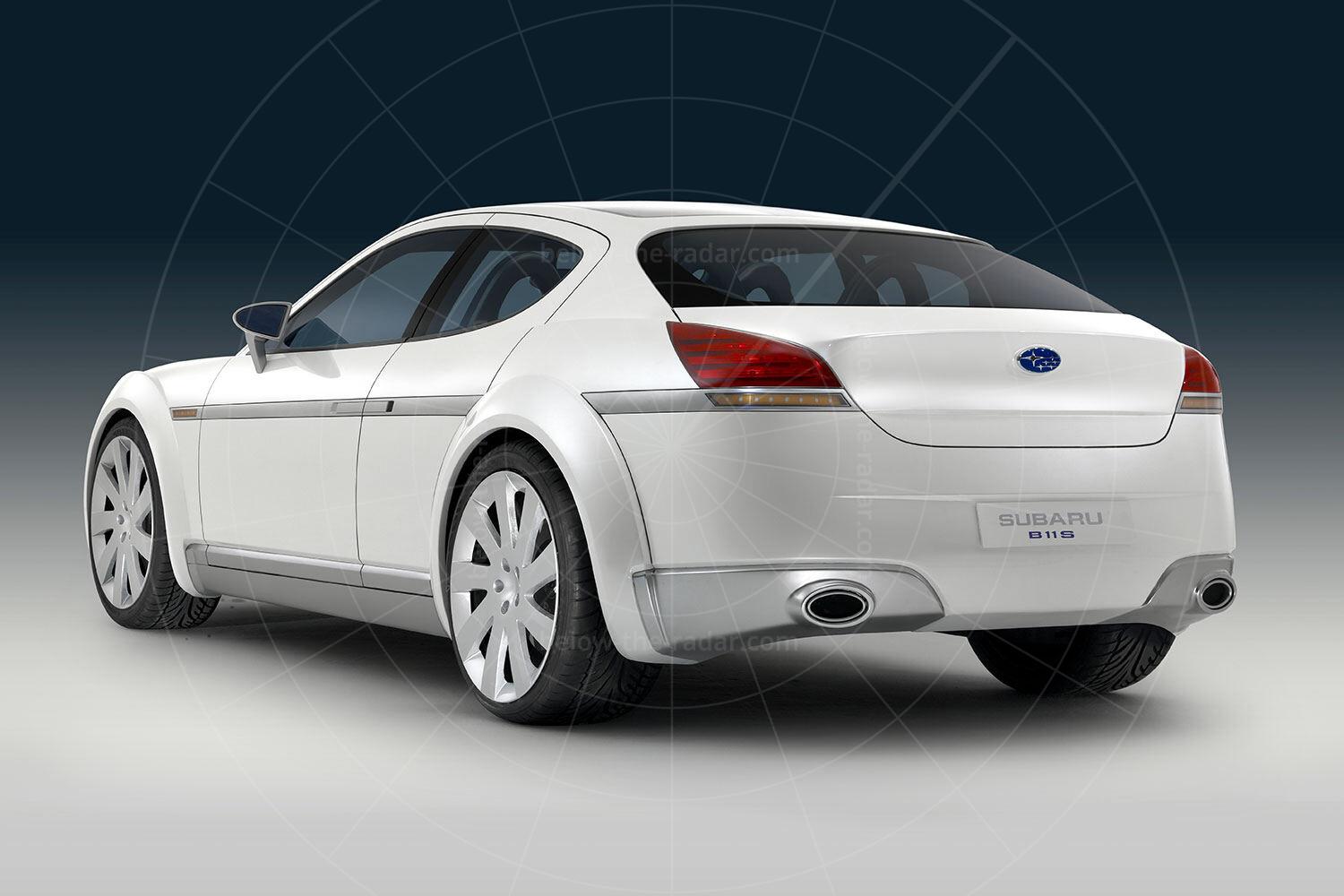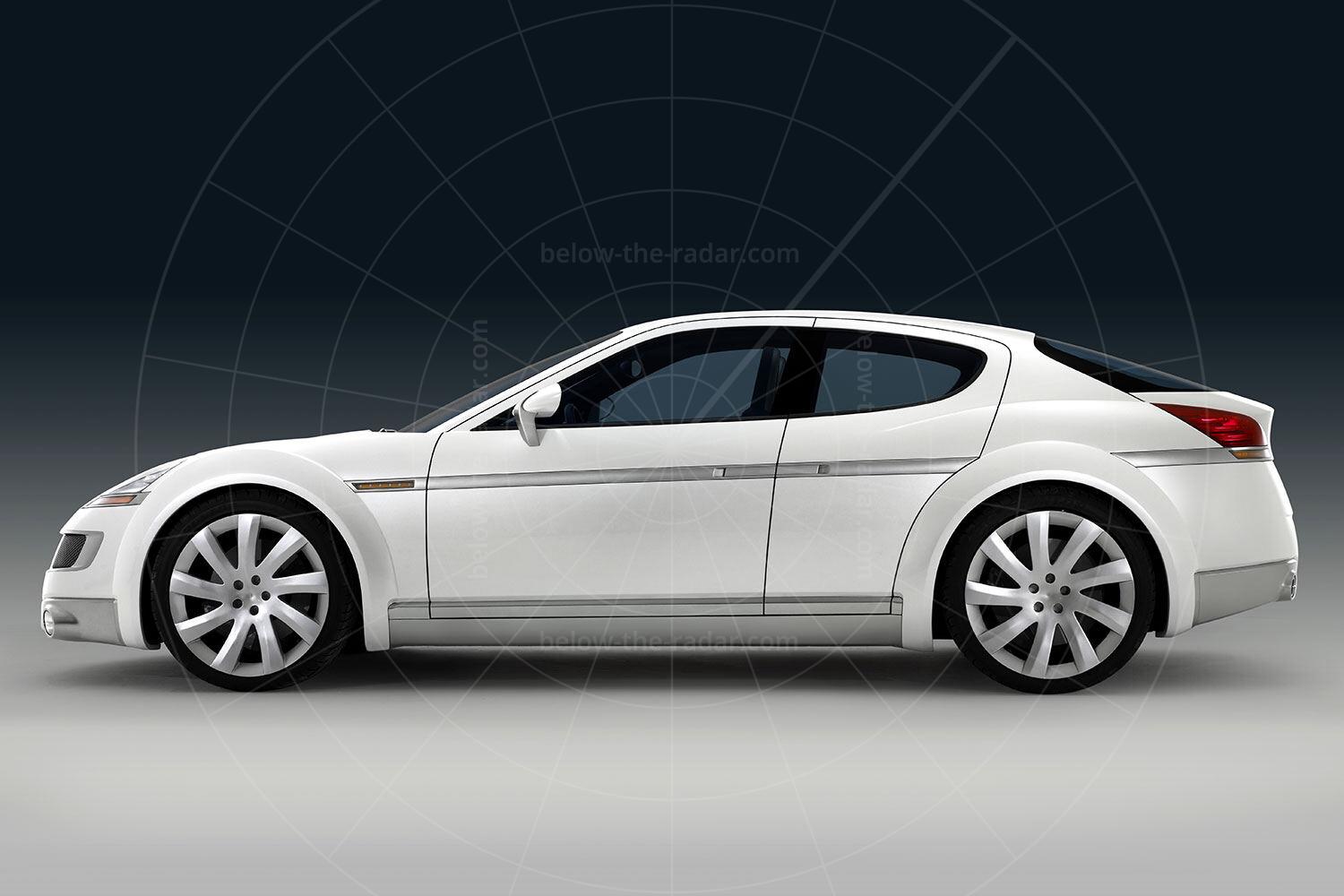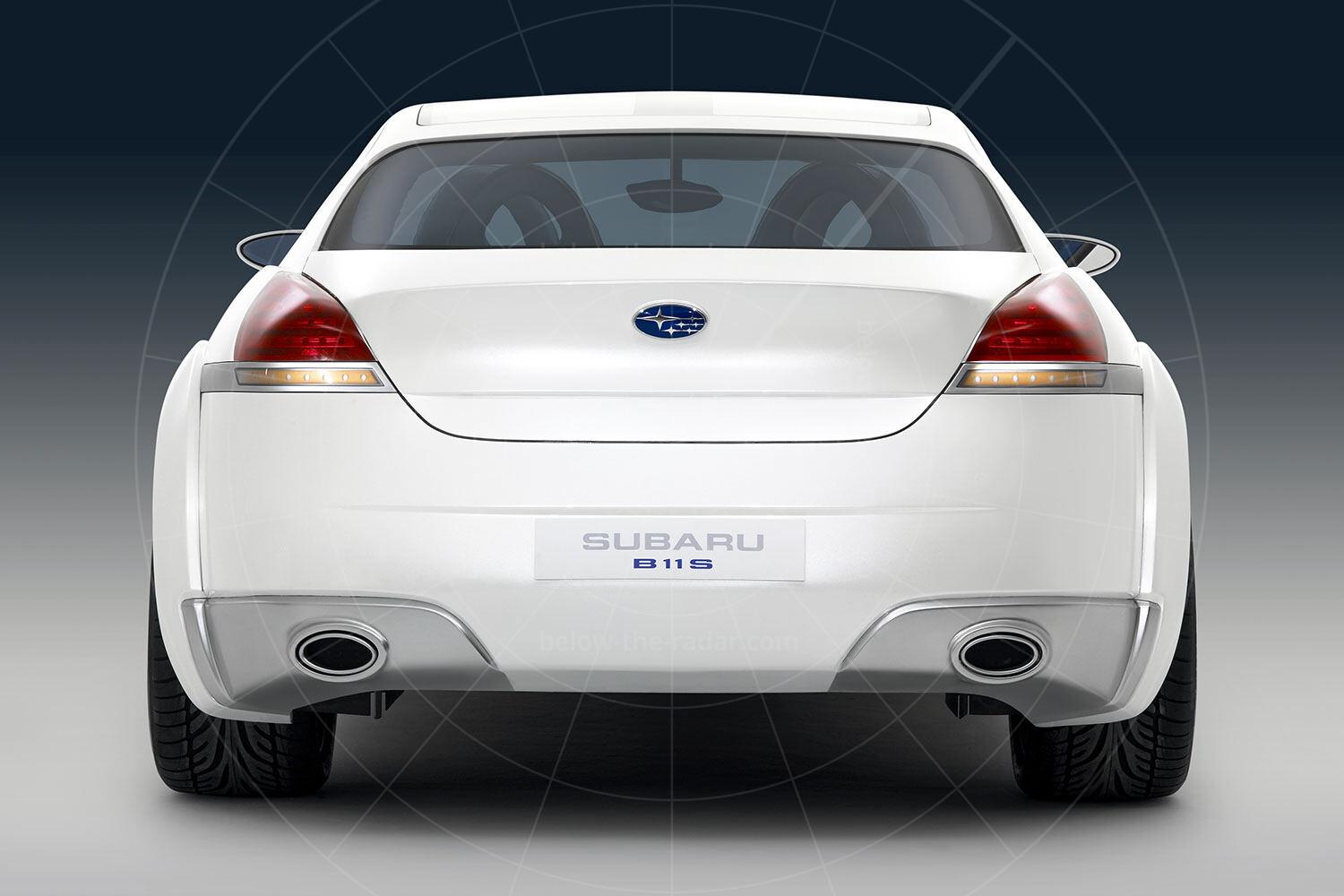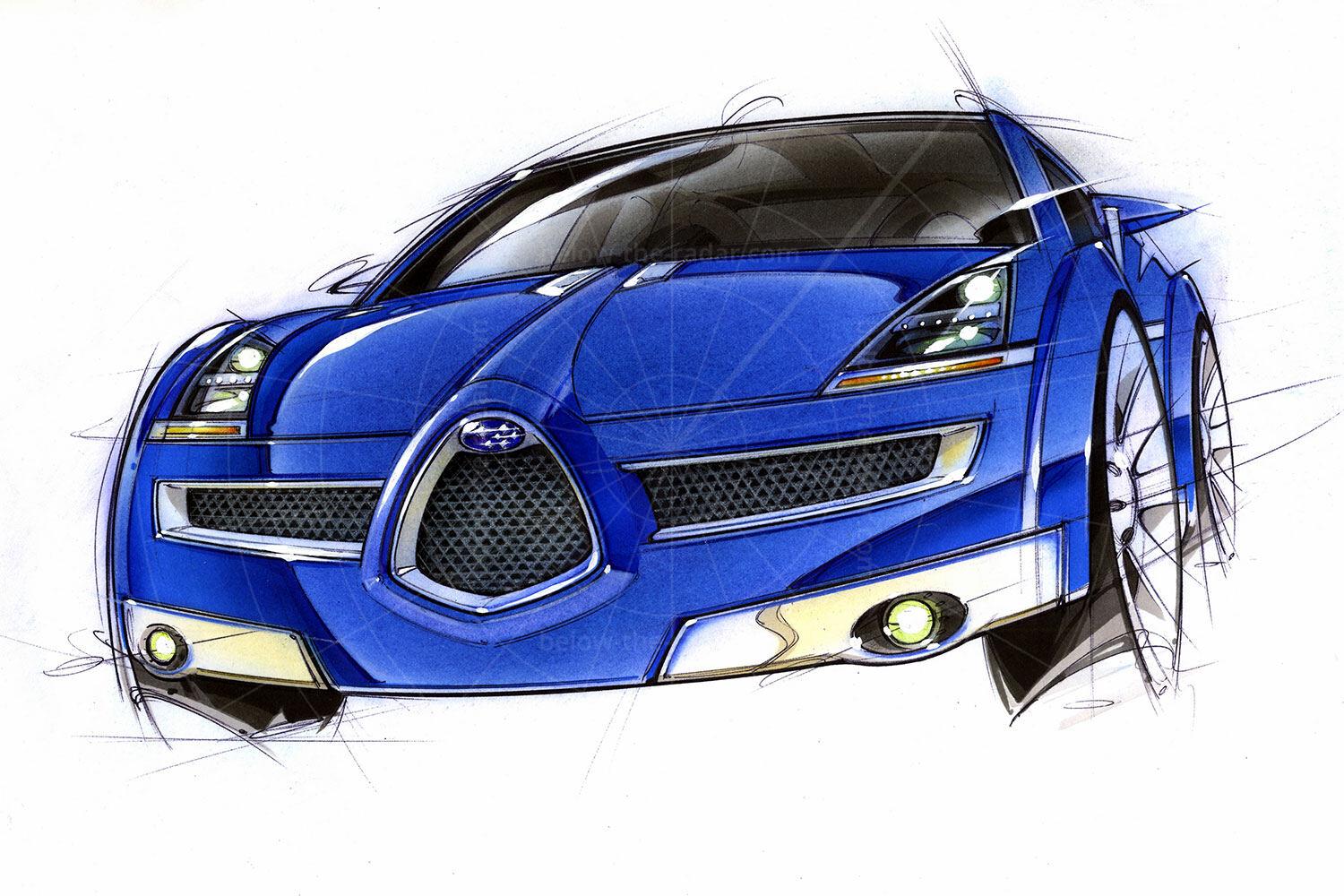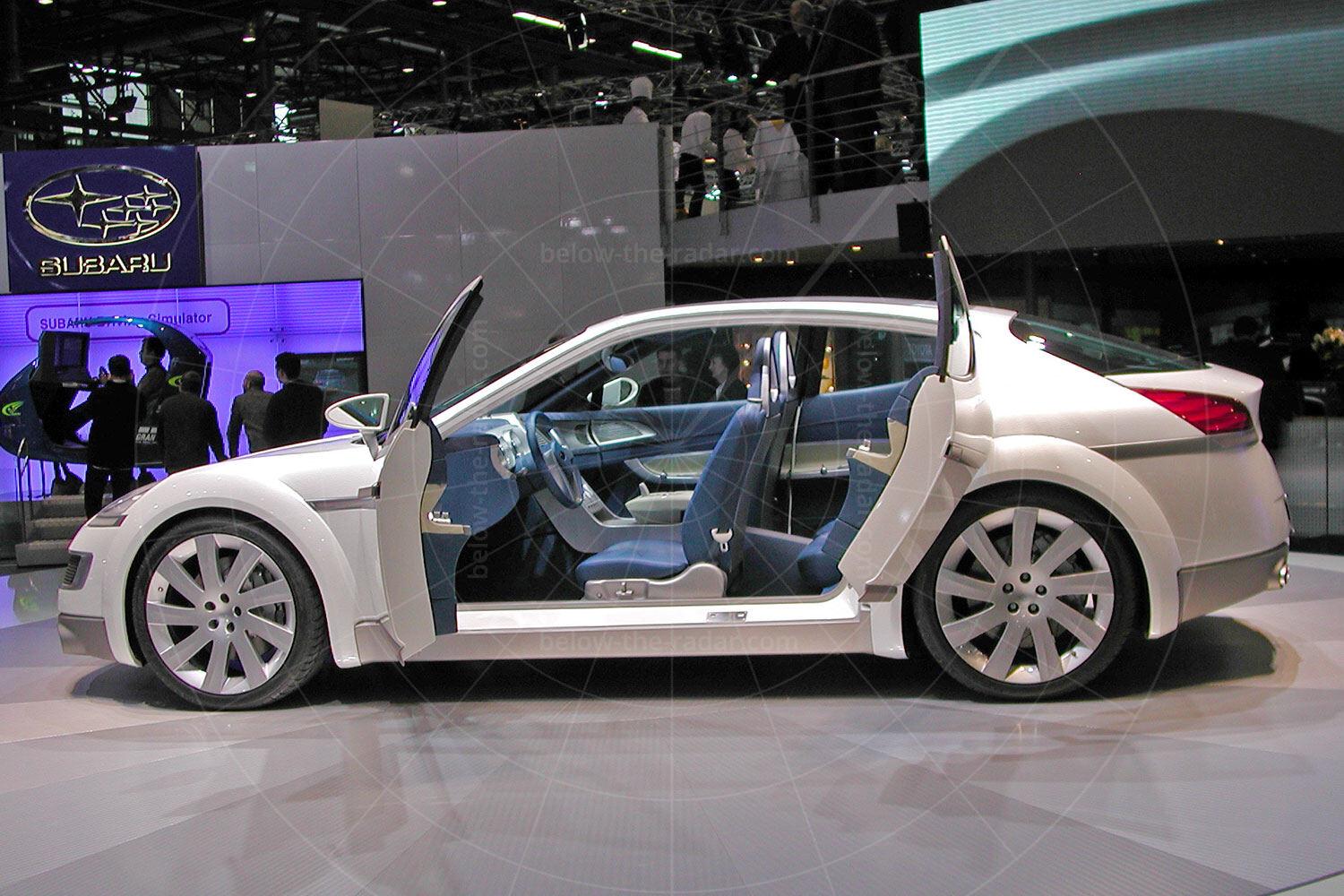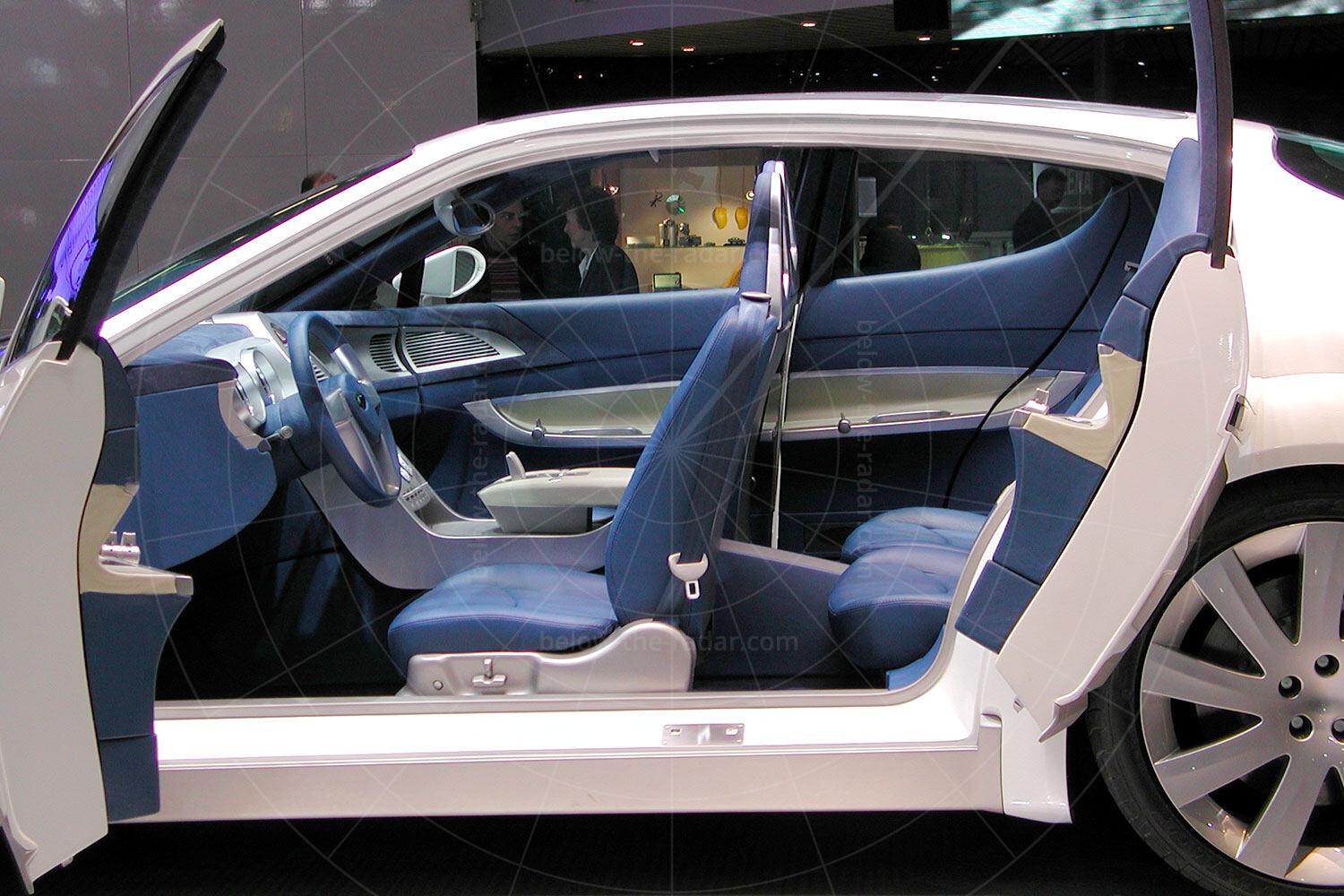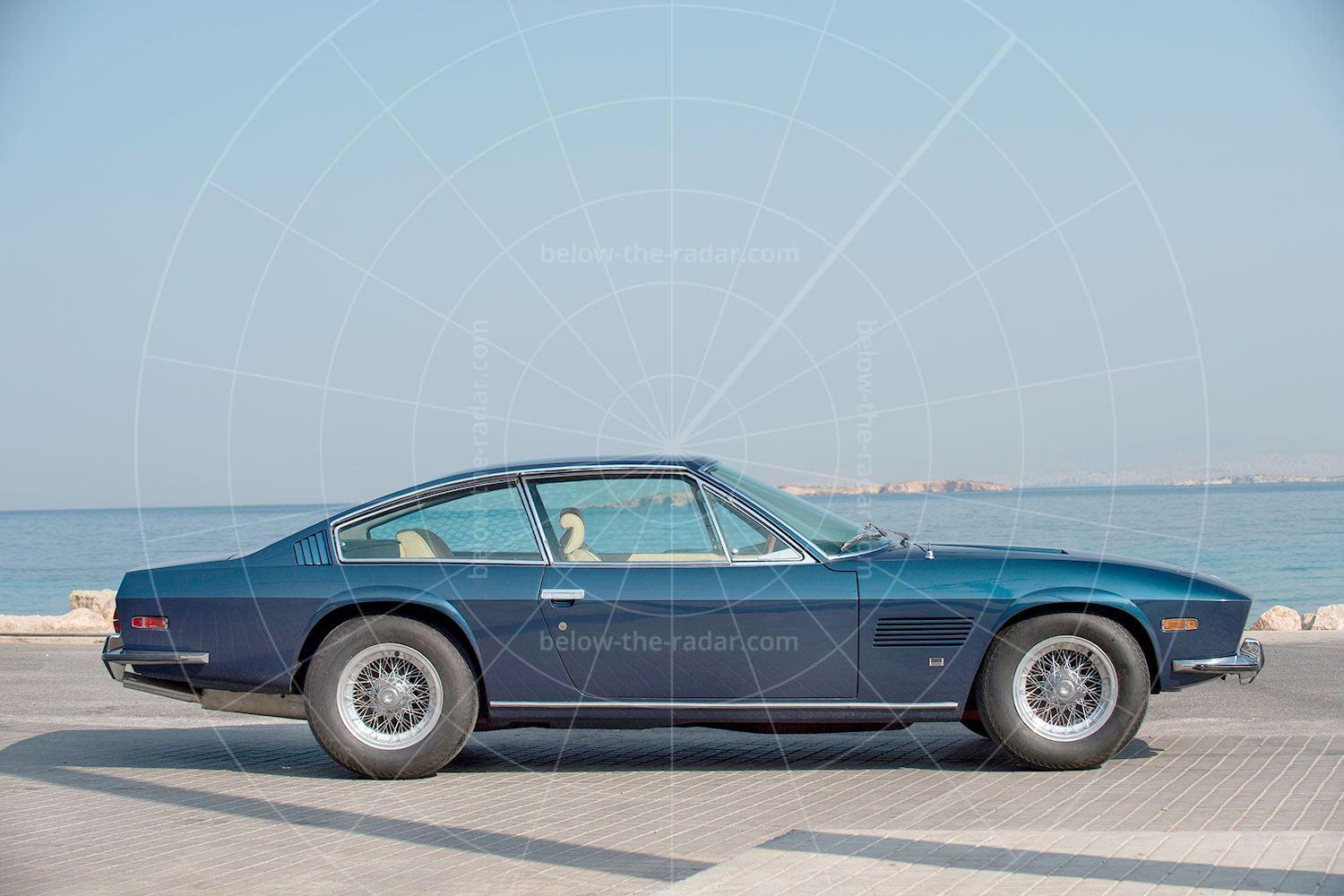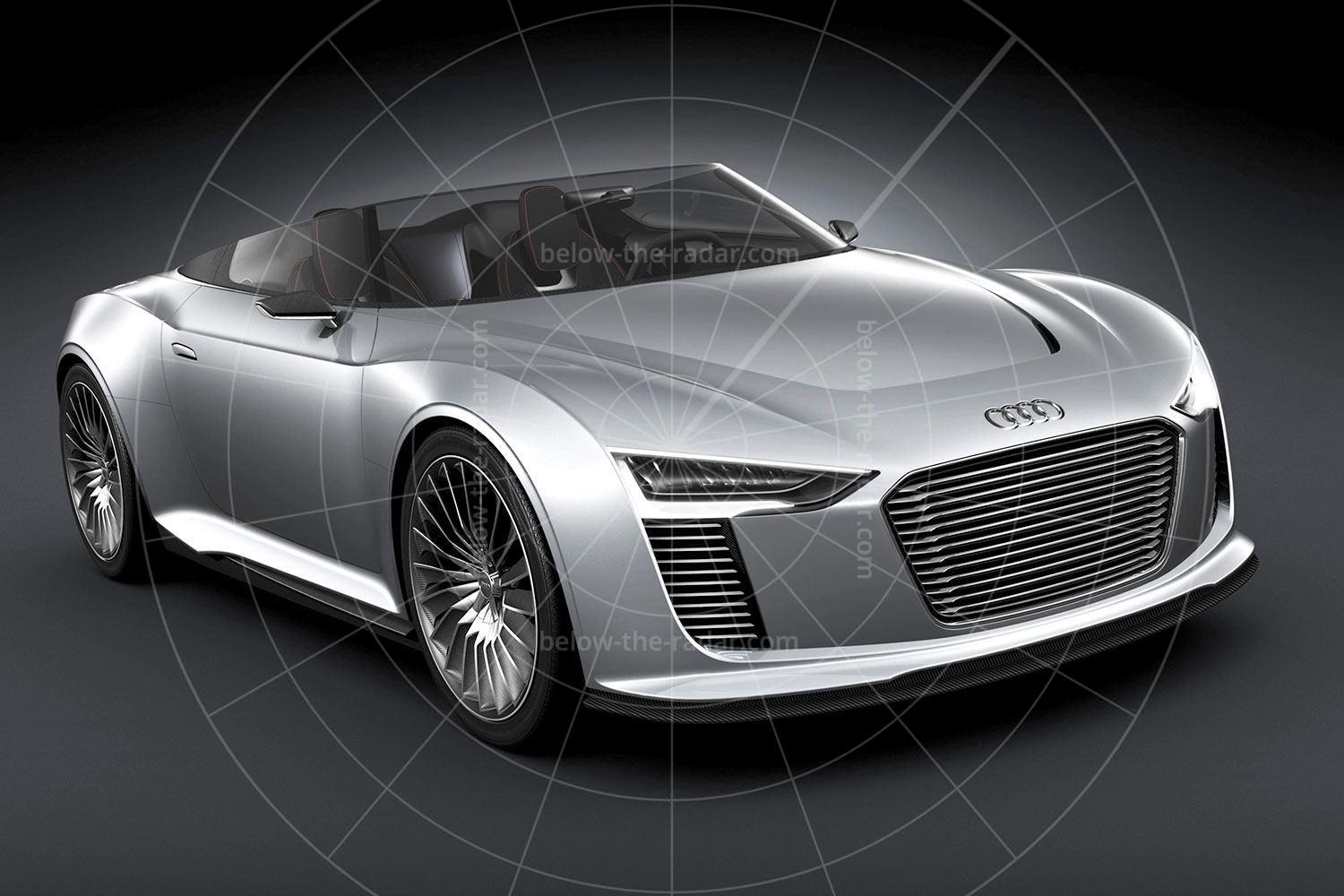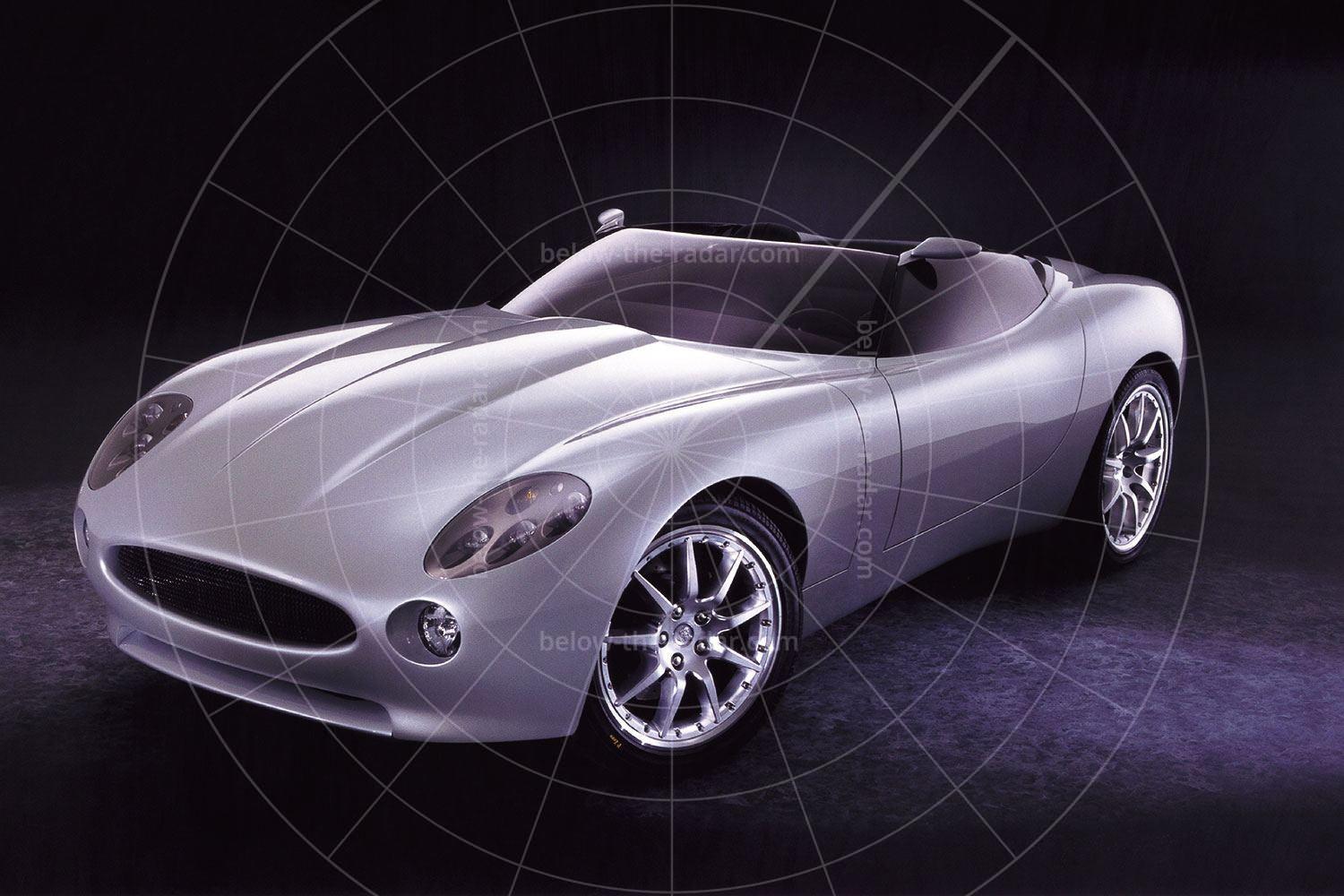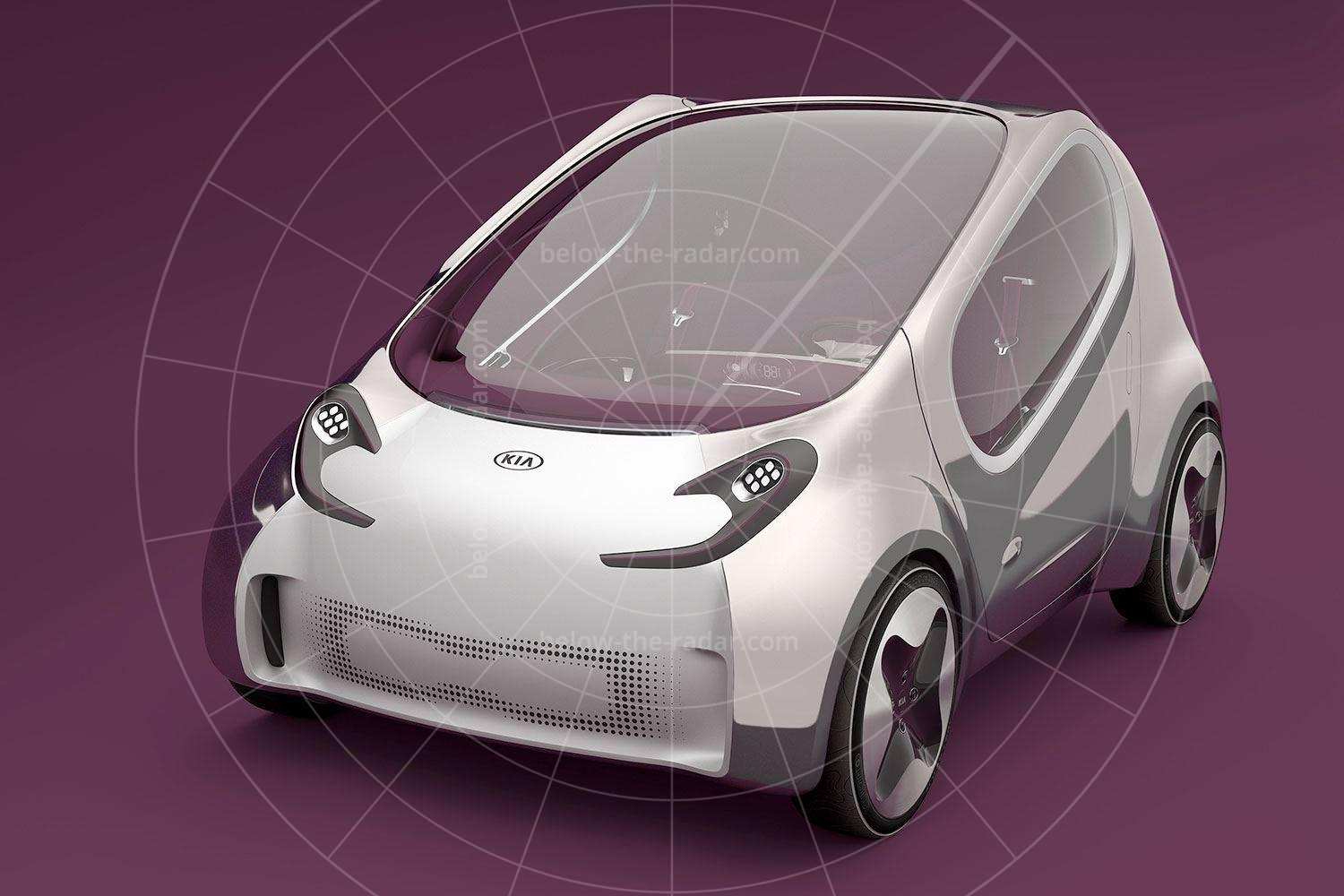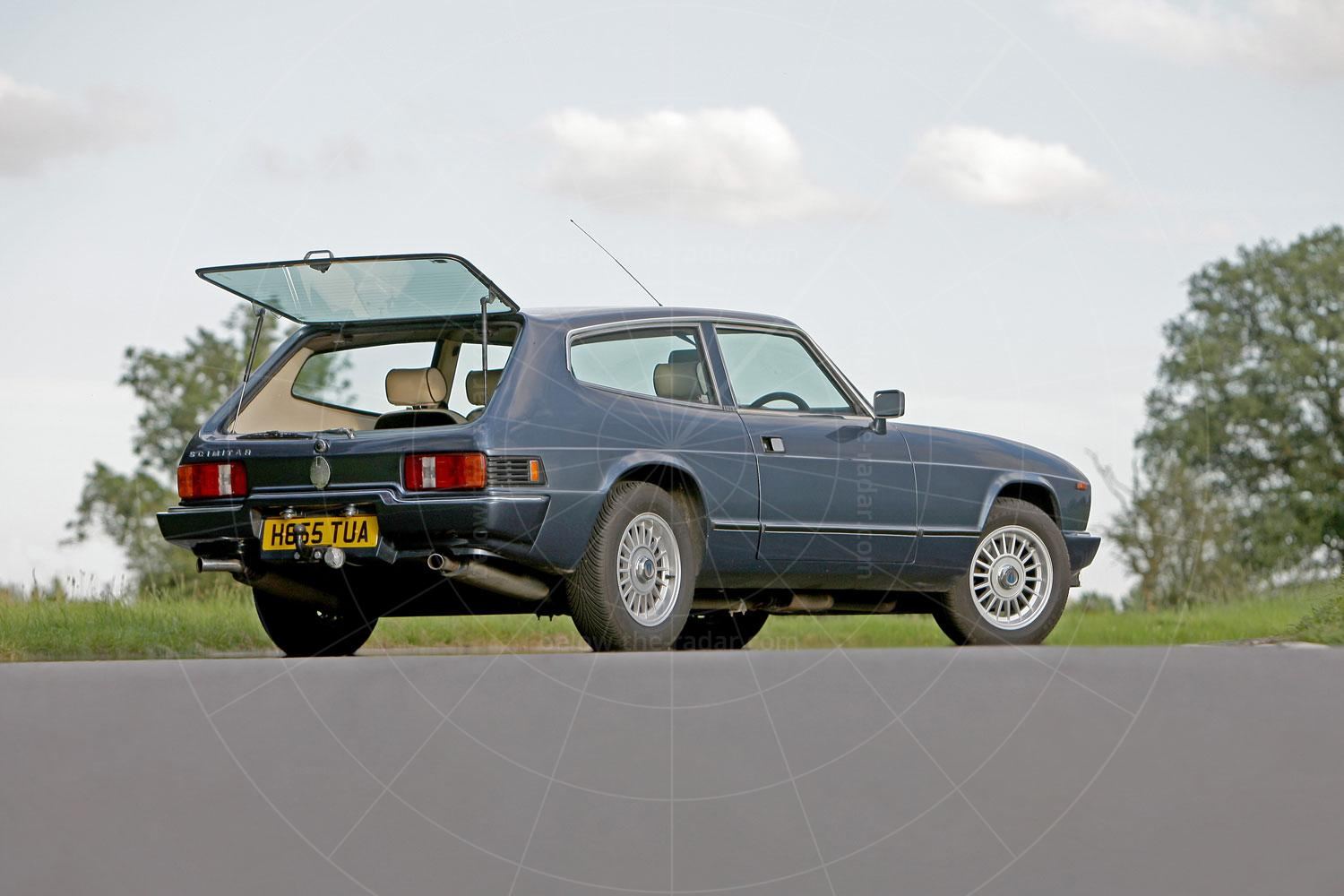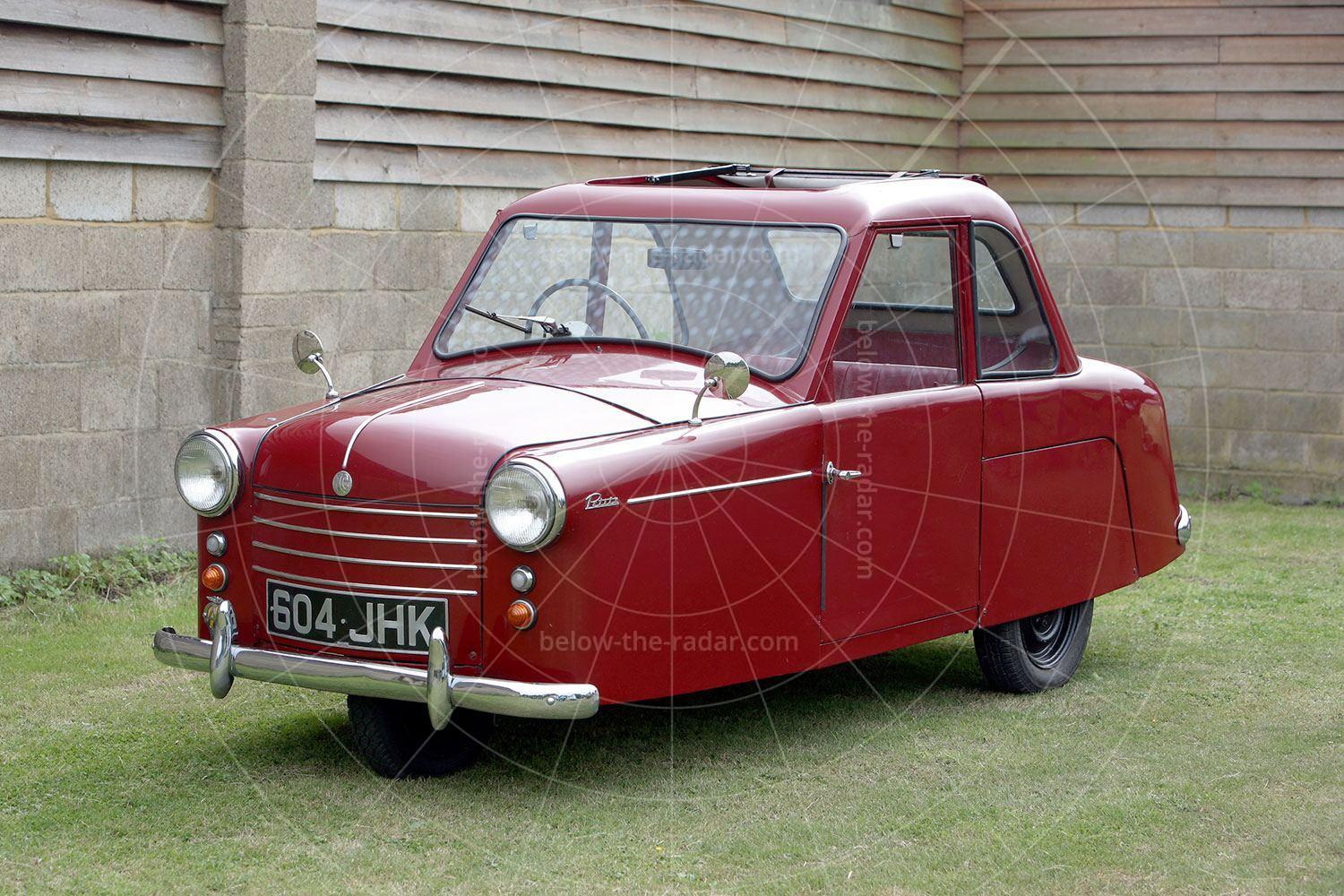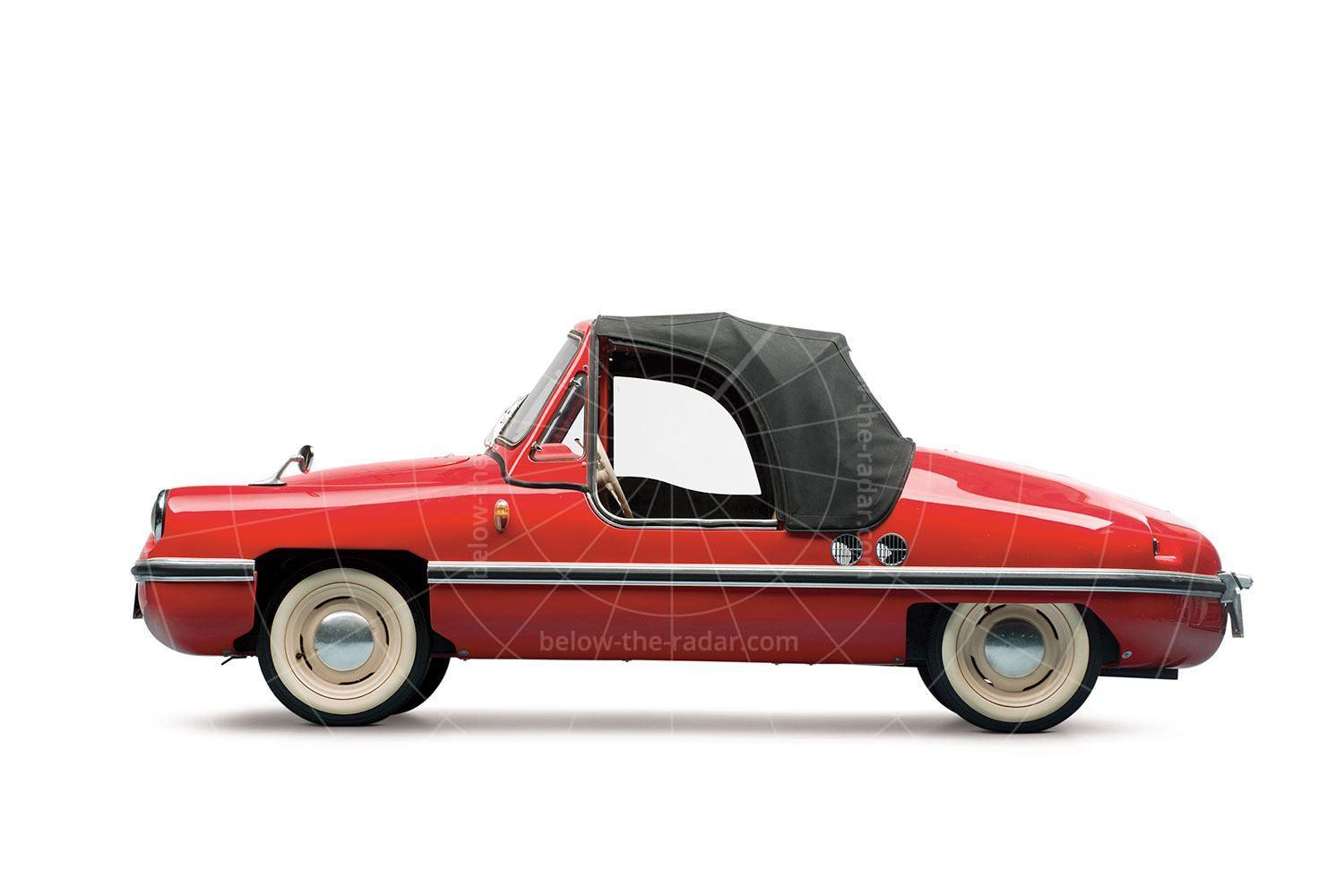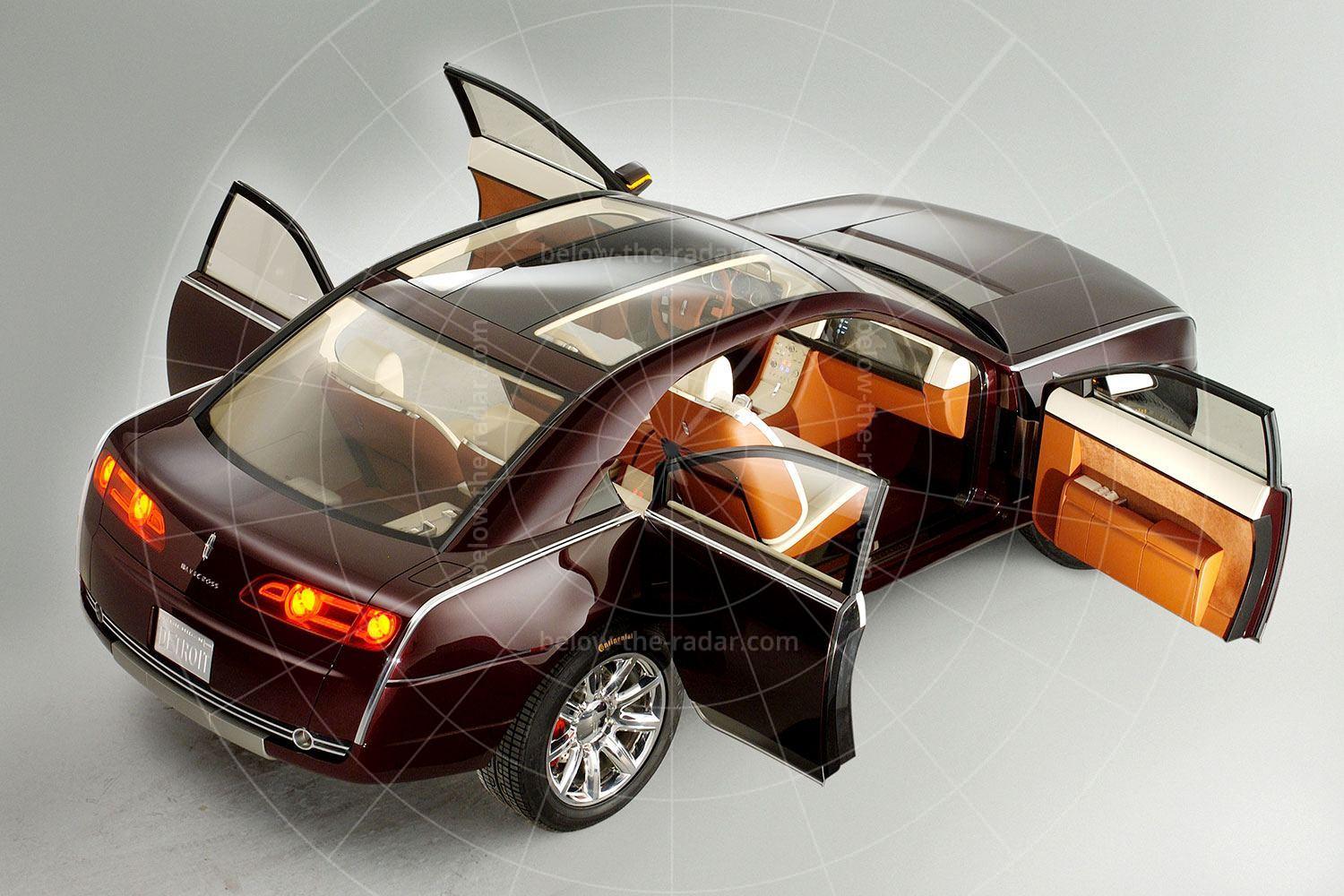For a company that was used to – and indeed synonymous with – building practical four-wheel drive saloons and estates, the B11S was a pretty radical departure from the norm for Subaru. Although it had a reputation for reliable and accessible performance – thanks largely to its Impreza Turbo, – there had always been a large dose of practicality thrown into the mix. At first glance the B11S (an abbreviation of Boxer 11 Sports) threw all that away, to focus instead on controversial design that put form before function. But look closely and you’ll see that very little was sacrificed, yet the B11S still managed to be much more stylish than anything that Subaru had ever offered for sale.
When it was unveiled at the 2003 Geneva motor show the B11S was hailed by its maker as being the first of a new generation of Gran Utility Turismos, which in theory made it a GUT. Rather unfortunate connotations aside, it did live up to the hype of offering a sporty driving experience combined with functionality and elegance, even if the latter trait might have been in shorter supply than the other two.
The concept of the B11S was very much along same the lines as the Mazda RX-8 (shown in concept form as the RX-Evolv). That meant it featured rear-hinged back doors, while the front doors opened conventionally. At the rear there was a tailgate which also opened conventionally, but despite this generally orthodox construction the B11S still looked like a sporting coupé.
Perhaps the most radical aspect of the car’s design – and the reason for it appearing to be rather less conventional than it really was – was the nose treatment. With a huge shield-shaped grille flanked by wide grilles on either side, the front of the B11S was quite ungainly from some angles. Running along the length of the bonnet was a rib which was supposed to echo the turbine of a small jet plane; something that was a reference to the fact that Subaru’s parent company, Fuji Heavy Industries, was also a manufacturer of aircraft.
At the back the tail treatment was reminiscent of the then-recently launched BMW 7 Series, with a deck that sat proud of the surrounding lights and wing tops. For BMW this had proved massively controversial, and the chances are that Subaru would have encountered just as much resistance to it had the car seen production in the same form in which it was initially shown.
The lack of a B-pillar allowed much better visibility than in a conventionally engineered car, while also allowing easier entry and exit. The feeling of spaciousness within the cabin was both perceived and real, in the latter case thanks to a frosted glass roof (the design of which was inspired by traditional Japanese umbrellas) that allowed light to pour in.
The feeling of spaciousness was also real because of the space-efficient seating that was used, as well as the unfussy design of the fascia. Everything was trimmed in blue or silver, with plenty of leather and Alcantara, to heighten the sense of quality. Added to this was a healthy dose of aluminium detailing, very tastefully used to pick out some of the switchgear and instrumentation.
Powering the B11S was a six-cylinder boxer engine – a powerplant configuration for which Subaru was famous. Displacing three litres, this unit was capable of generating up to 400bhp and 405lb ft or torque with the aid of a pair of turbochargers. To help transmit this to the road there was permanent four-wheel drive which incorporated an electronic torque distribution system. This constantly monitored the traction levels at each of the four wheels and it allowed those with the best levels of grip to be sent the highest levels of torque, although in normal use the rear wheels were fed two-thirds of the available power.
| Vital statistics | |
|---|---|
| Debut | Geneva, 2003 |
| Engine | Front-mounted, 3.0-litre, twin-turbo flat-six |
| Transmission | 5-speed auto, four-wheel drive |
| Power | 400bhp at 6400rpm |
| Torque | 405lb ft at 3600rpm |

